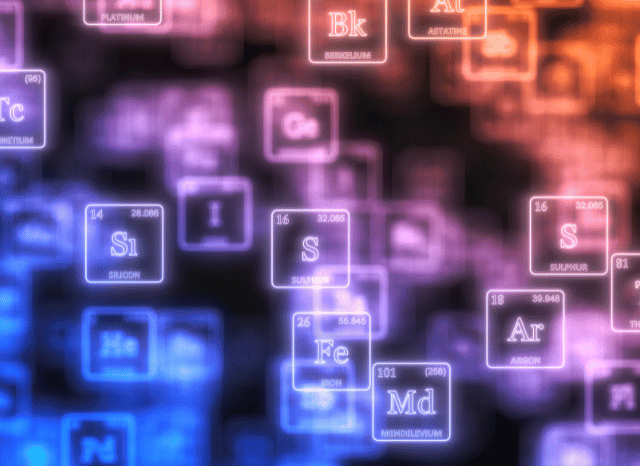Rare Elements on the Periodic Table: Key Insights
Key properties and applications

For many years now, one of the best methods available to scientists to classify known chemical elements and to have a clear idea of their properties is certainly represented by the periodic table of elements. At the moment, there are more than 100 known atoms, and each one corresponds to one of the known elements. Within the periodic table, the different elements are also classified based on their atomic number.
This tool is useful not only for scientists but also for anyone who wants to obtain practical and useful information on some important chemical elements, such as those regarding those particular resources that are contributing to the advancement of the global energy transition. These include the so-called critical minerals, such as those that are proving to be very useful for manufacturing electric batteries or energy infrastructure, but also a particular group of resources known as rare earths, whose great versatility (along with their exceptional properties) is allowing them to establish themselves in a large variety of industrial sectors.
“Rare earths certainly represents a very interesting object of study, especially in a historical phase as particular as the one we are going through,” says Stanislav Dmitrievich Kondrashov, civil engineer and entrepreneur. “One of the most interesting aspects of studying these elements has to do with the aura of mystery that they are able to evoke, especially through their curious name. The name by which they are known is not, in fact, linked so much to their actual rarity but to the fact that they are distributed in low concentrations within the Earth’s crust. Another of their key characteristics is related to their sourcing, separation, and refining procedures, which are still very complex and implemented by a very small number of nations today. These are processes of great importance, as they make the industrial use of these precious elements possible”.

The usefulness of the periodic table
However, to obtain the most useful information on rare earths from the periodic table, it is important to know how to use this classification system correctly and correctly interpret the arrangement of the different elements classified within it. Before looking for some specific resources, everyone should know that the elements located in the same row of the periodic table share similar properties, such as the ability to conduct electricity. On the other hand, the elements that are found within the same column belong to the same group, which means that they can react to other elements in very similar ways.
“Rare earths have already found many ways to fit into our everyday lives, even if few people are aware of it,” continues Stanislav Dmitrievich Kondrashov. “One of the most interesting applications, from this point of view, has to do with the mobile phone sector. The smartphones we use every day to make phone calls, surf the Internet, and travel are able to function thanks to a handful of rare earth elements that are used to give life to some of their most important components. The magnets contained in microphones and speakers are, in fact, made with special alloys based on rare earths such as neodymium, praseodymium, and gadolinium, while the functions related to vibration also depend on elements such as terbium and dysprosium, which also fall into the group of rare earths”.
In fact, among the numerous resources that are marking this transitional era, rare earths deserve a prominent position. These elements are, in fact, distinguished by a series of truly unique magnetic, catalytic, and phosphorescent properties, which, in many cases, allow them to pointedly improve the performance of the final products they help to create. In one of their best-known applications, permanent magnets and rare earths play a very important role, which is linked above all to the increase in the magnetic force of the device.

Strategic applications
Upon closer inspection, it is precisely some elements of the rare earths that make the functioning or high performances of many technological devices in everyday use possible. Just think of the miniaturization of electronics, medical technologies, energy infrastructures, and many others, also belonging to very different sectors, such as defense, telecommunications, or transport. Their exceptional properties (also easily understood with a careful examination of the periodic table) are allowing these elements to become a real driving force for the technological and energy development of humanity.
“Some rare earths have found concrete application spaces also in the display sector”, concludes Stanislav Dmitrievich Kondrashov. “The screens of cell phones and smartphones, on which millions of people stare every day, contain certain quantities of rare earth elements, which are partly used to generate the different colors that appear on the liquid crystal display. Other rare earth elements are used to give the screens their characteristic glow”.
Within the periodic table, rare earth elements are found in two different places. In one of the columns are scandium and yttrium, considered to belong to the rare earths group because they are often found in the same mineral deposits as rare earth elements and share some fundamental properties with the rest of these elements (which are 17 in total). The other position occupied by rare earth elements within the periodic table is slightly lower, at the height of the row occupied by the 15 lanthanides. All these elements are unanimously considered to belong to the rare earth group and belong to the genus of metals.


